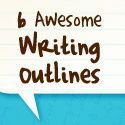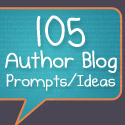You would think, as writers, that we would be perfectly gifted for writing top-notch press releases. It’s what we do for a hobby, a career or a passion. It’s our talent. But in my experience, being writer has been a handicap when it comes to creating press releases.
The problem is, most writers (including me) pride themselves on their creative license and flowery prose. Unfortunately, press release writing necessitates that we abandon both of those trademarks in favor of concrete parameters and succinct lines. I can’t tell you how many weeks of well written press releases were returned to me in my public relations writing class with enough red ink to paint a Target store. It took me a while to figure out that “well written” in press release terms meant short, sweet and to the point.
Writing press releases is like writing news articles—you’re basically putting together a piece that a lazy reporter could slap his/her byline on and run in tomorrow’s edition of the paper. You have to approach it from a journalistic standpoint (a basic one, at that, you’re not trying to be the next Woodward or Bernstein).
To give you a head start, we’ve put together our five best tips for writing a stellar press release—follow these guidelines and you’re sure to get some good press!
1) Answer five questions in the first paragraph: Who, What, When, Where and Why
There are absolutely no exceptions to this rule. In the first paragraph (which should be composed of three or four sentences and no more than 50 total words) you need to establish the answers to the following: who is the press release about (you), what is the press release about (new book release), when is the event taking place (time and date), where is it going to happen (bookstore in town) and why should anyone care (because you’re a local author with a poignant story). Sometimes you might need to answer a “how” as well, like “how can I get a copy of your book?” (online).
Think of press releases like Google Search results, the first paragraph is the first page of results, after which you’re going to lose two-thirds of your readers to A.D.D., laziness or impatience (or in my case, a combination of all three). So you’d better get the important information out there before they move on to something else.
2) Bequeath is a cool word, but not in a press release.
The average American adult reads at about an eighth grade level. Sad statistic, but it’s true. So when you’re writing your press release, ditch the SAT words in favor of a common lexicon that’s less culturally and intellectually isolating. While you’re at it, you can pretty much forget about adjectives and adverbs as well. Press releases are about quick facts. Mudding up the waters with extra descriptors is going to make it harder for people to see the important information.
3) Follow the AP guidelines (Except the one about commas in a series).
Before you write even one press release, go to your local bookstore or hit up Amazon.com for a copy of the latest edition of the AP Stylebook. You don’t have to read it cover-to-cover, but there are some common AP styles you should know, including:
- State Names: In writing press releases, don’t use the postal abbreviations for states. The AP Stylebook has a list of proper abbreviations for every state in the U.S. For example, Florida is not FL in a press release, it’s Fla. Some states, like Texas and Utah, for example, are not abbreviated. You don’t have to memorize the list, just keep the book around for reference.
- Numbers: Ten is the magic number when it comes to the AP Style guidelines. Numbers under ten should always be spelled out, but numbers over ten can be represented by digits. The number ten itself is a swinger, it can go either way. 😉
4) Keep it “just that” simple.
We all have certain words that we use as filler space in our writing, the same way valley girls use “like” in conversations. Most common among these superfluous words are “just” and “that.” After you’ve written your press release, go back over it and you’ll probably find that you can remove half (if not all) of the “just” and “that” mentions. Like I said before, press releases are meant to be succinct, which means every word counts. You have one page to get your message across, don’t waste space on words that you don’t need. It’s just that simple.
5) It’s all about relevance.
In the same manner that realtors use the phrase “Location, location, location” to emphasize the importance of value to their clients, you need to understand that “Relevance, relevance, relevance” is the key to establishing value with your readers. People need to know why your story is relevant to them. Why should they care? Why should they buy your book, go to your autograph signing, or even want to read about you at all? You have to tell them why. It might be because you have something in common with them, because your book’s subject matter would appeal to them, or because your event would be a unique experience for them. No matter what the reason, establishing your relevance is the number one key to a successful press release.
Do you have questions about press releases? How about some press release writing tips you’d like to share with our community? Feel free to join the conversation by posting a comment on our blog!
Later days,
Shannon

 We're
We're 








